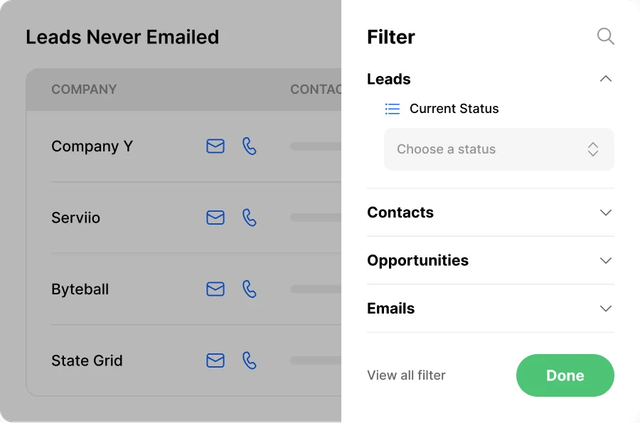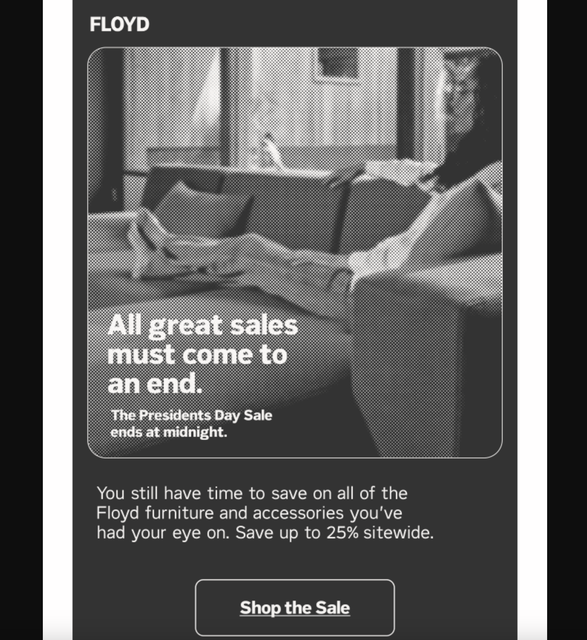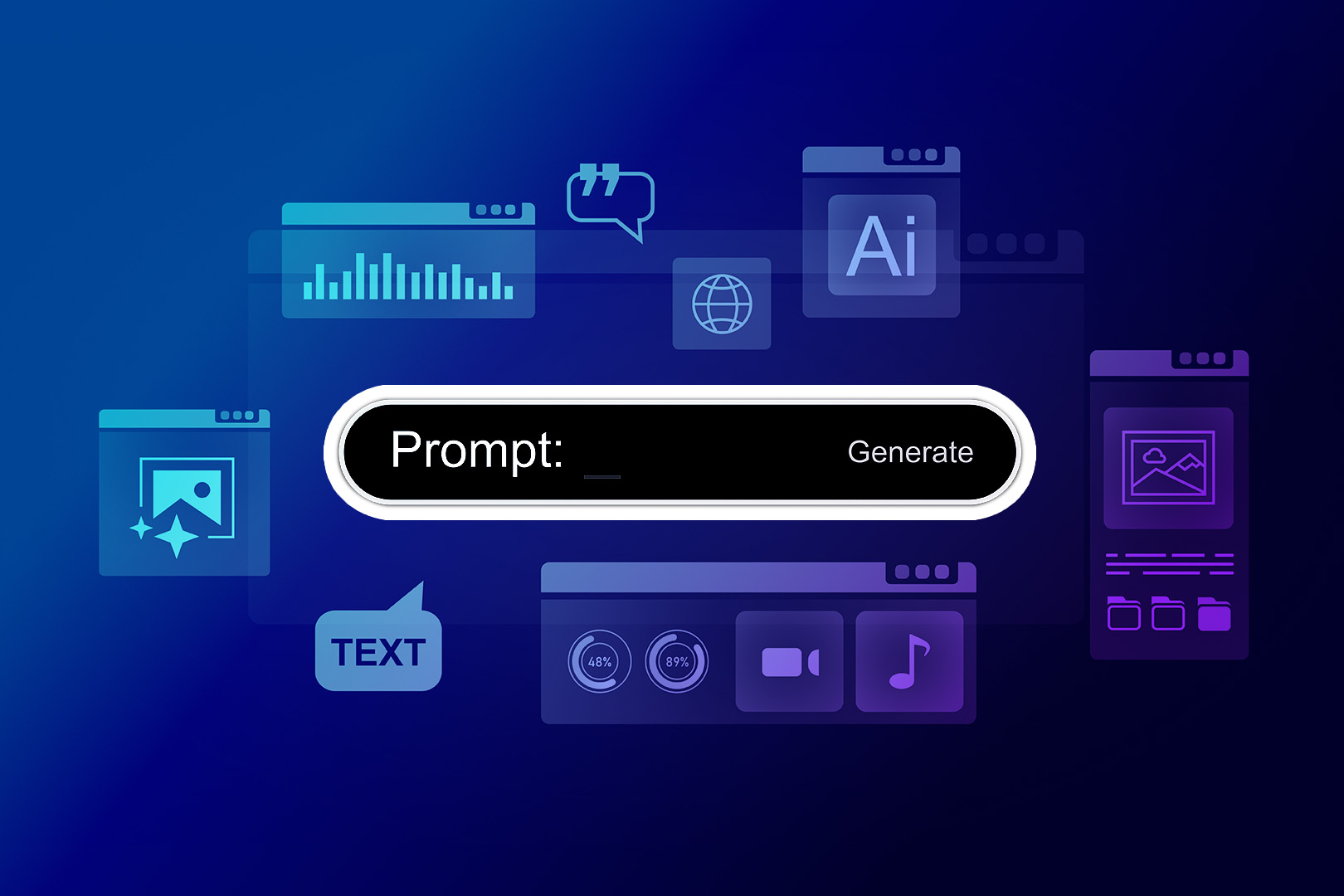
18 Bulk Email Best Practices for Small Businesses: Never Land in Spam Again
There’s no feeling like hitting send on an email that’s going to hundreds of people.
Your palms are sweating. Your heart’s racing. You might feel a bit nauseous.
First off, let me just say: that’s perfectly normal.
And frankly, it’s a good thing—it means you care about the results. You want your email to resonate with your audience. You want to gain positive sentiment (and maybe even new sales).
So, let’s worry about bulk email together.
By the end of this article, you'll:
- Understand what bulk emails are and how they differ from Workflows.
- Know email sending limits for email providers like Gmail, Outlook, Mailgun, Sendgrid, and more.
- Master best practices to make sure your emails hit the inbox and actually engage your audience.
Bulk Emails: What are They and When Would You Use Them?
While an individual email is normally one-to-one, bulk emails are one-to-many. This is one email that you send to a list of many recipients at the same time. The goal: to share some timely or important information that will benefit them.
Of course, different areas of your business will use bulk email differently. For example:
- Marketing uses bulk emails to nurture leads and retain customers. They might send a weekly email newsletter, a promotional email, or an update on company policy or the products or services you sell.
- Sales uses bulk emails to communicate with prospects and customers and build relationships. This team might use bulk email to reach new leads, send a special promo to churned customers, or let everyone know about exciting new product launches.
But here’s the deal: bulk emails must be relevant, targeted, and valuable.
If your audience thinks, “Cool, I’m interested in that promo,” “I know this person, let's chat,” or “Got it, T&Cs updated,” you’re on the right track. This sentiment helps your emails stay out of the spam folder.
When Should You Use a Bulk Email vs. an Automated Workflow?
Bulk email is specific to this moment—something you want to tell your recipients right now.
Emily, our Senior Lifecycle Marketing Manager, shares, “Mass emails are about special promotions, announcements about your service or business, or just some content. You want to put them in front of people at a specific moment.”
Workflows, also called campaigns, drips, or sequences, are behavior-based tools mainly used for nurturing and re-engagement.
“Instead of communicating something now, Workflows fire when a segment of folks stopped engaging with your brand or a lead that was a no-show on your demo call. Workflows are always behavior- or schedule-based,” adds Emily.

Bulk Email Sending Limits for Various Email Service Providers: Get Them Right to Keep Your Emails Front and Center
Email service providers (ESPs) set limits to how many emails you can send per day. Why? Basically, to catch spam emails before they ever get to someone’s inbox.
So, don’t think of these limits as enemies you must overcome. Think of them like traffic rules: maybe they’re not always convenient, but we can all agree they make things smoother.
When you play by the rules of your ESP, you’ll maintain a good sender reputation, avoid triggering spam filters, and get more fantastic emails into people’s inboxes.
Win-win, right?
Here’s the lowdown on what you need to know.
Foundational Bulk Email Best Practices: Set Yourself Up for Success
Before you even start thinking about what to write, you need to make sure the foundation of your bulk email “house” is set up correctly.
Otherwise, you risk it all falling apart the moment you hit send.

(Don’t be that guy.)
So, how can you ensure that your tech setup for bulk emailing is complete and compliant? Start with these essential tips.

1. Choose a Reliable Email Service Provider (ESP)
Your ESP is the basis for all the emails you send out, and it’s the main piece of tech in your email stack. So, you want to choose a good one. Here are some basics you should look out for:
- Sending limits should match the volume you want to send
- Deliverability rates should be high
- It should offer some email analytic data
- It should integrate well with your current tech stack, especially your CRM
- Customer support should be excellent at solving problems quickly
- It should be compliant with privacy laws
A solid option is Gmail, which integrates with most CRMs. At Close, we have a two-way integration with Gmail, so you can send bulk emails directly from your CRM. Focus time is precious, right?
2. Implement Email Authentication Protocols
Set up SPF, DKIM, and DMARC records to improve deliverability and protect your domain. These protocols verify that your emails are legit and not being spoofed, maintaining trust with your recipients and keeping your deliverability rates high.
Use your DNS provider to add these records and monitor their status regularly. This setup ensures your emails are authenticated and reduces the risk of being flagged as spam. If you’re unsure where to start, hit your IT team up for help, or check out the helpful guides from Google:
3. Monitor and Maintain Sender Reputation
Just like a personal or business reputation tells people whether or not they can trust you, your sender reputation tells mailbox providers whether or not they can trust you.
This is a combined score between your IP reputation and your domain reputation, so all emails sent from your company can impact this score.
This reputation isn’t given; it’s earned. Here are some quick tips to make sure your sender reputation is higher:
- Clean your email list often to ensure you’re only sending bulk emails to legitimate email addresses. This will lower your bounce rate and improve your sender reputation score.
- Avoid sending many emails all in one go (more on this later).
- Be careful of spam complaints. If a certain email got a lot of spam complaints from recipients, go back and see what you can change to avoid that in the future.
- Focus on emails that encourage engagement (higher engagement = better score).
- Avoid spam trigger words that ESPs will automatically flag as spam (like “free,” “winner,” “prize,” etc.).
Tools like SenderScore and Postmaster Tools give you insights into your sender’s reputation. Use them to monitor for any drops.
4. Test and Optimize Email Deliverability
You worked hard on creating an email with witty copy and great value—but it’s useless unless it gets into the inbox.
So, test your emails to ensure they reach the inbox.
If your sample size is decent, use A/B testing to see what subject lines, content, and sending times work best. Analyze the results and optimize your strategy based on what improves deliverability and engagement.
How? Well, we hand the mic to Stefan Stefanov, who has extensive experience with email A/B tests.
5. Throttle Bulk Emails
While you may have a list of relationship red flags, each email service provider has a list of red flags for emails.
And when you send the same email to thousands of people at the same time, after not sending anything for days or weeks? Major red flag.

That’s where email throttling (or email warmup) comes in.
Instead of sending hundreds or thousands of emails all at once, you can send them over a set period of time, slowly ramping up the number of emails you send.
Green flag.

Of course, no one wants to do this manually. So, use software that lets you schedule and throttle bulk emails. This will help you stay on good terms with ESPs and maintain a better sender reputation.
In Close, this is all done automatically under the hood, so you don’t need to worry about hitting sending limits and triggering spam filters.
6. Segment Your Audience
Segmentation looks different for each team, but the main idea is to filter out those who shouldn’t receive your email. Each bulk email has a different purpose—when you understand why you want to send this email, you’ll have a better idea of who really needs to see it.
Emily, our Senior Lifecycle Marketing Manager, adds,
“Segment your bulk emails by contact status. For example, you might send emails only to customers, not leads.
“A message you send to a churned customer differs from a message sent to a new lead. Or, in some cases, it will make sense to merge leads and churned customers into one Smart View and send something relevant to both.”
7. Send it to Relevant People
While this might sound like segmenting your audience, it’s more about ensuring your emails are relevant on a tactical level.
What makes a bulk email relevant?
- Recognizable sender: Ensure your audience knows who you are.
- Audience interest: Make sure they want to hear from you.
- Clear value: Be clear about what’s in it for them.
Convey these through a segmented audience, sharp copy, and an intriguing subject line.
If you’re unsure what to write, do a quick research, check internal documents, and look at your audience's social media profiles.
We guarantee that bulk mailing based on research will be better than 80 percent of emails that landed in your mailbox in the last few days.
Here’s an example: Let’s say you sell a SaaS tool for designers, and want to reach out to users who haven’t engaged with the tool in a while. Here’s a relevant email you could send to encourage engagement within this segment:
8. Include Clear and Compelling CTAs
We all love to get creative with CTAs and button copy. (Or, is that just me?)
But the most compelling CTAs are short and clear. No muss, no fuss, no confusing multi-choice CTAs. This isn’t a choose-your-own-adventure book, this is an email. Keep it simple, and you’ll see more people taking the action you want them to take.
Here’s an example:
9. Make it Compliant with Privacy Regulations
Compliance with privacy regulations is crucial for everyone. Not only is it essential to stay compliant with stricter laws, but it’s also ethically the right thing to do. Getting your audience’s consent before sending them emails makes you a law-abiding citizen, and a better human being.
A couple of important points:
- Know your audience: The regulations you need to follow depend on where your audience is located.
- GDPR for the European Union citizens
- PDPL for Saudi Arabia and Gulf countries
- CCPA for California, United States
- CAN-SPAM Act for the United States
- Offer an unsubscribe option: Always include an easy-to-find unsubscribe button or link. If needed, adjust according to specific privacy regulations.
- Avoid dark patterns: While privacy laws have loopholes, you don’t want to use them. People are usually tricked once, but the bad taste remains. It’s always better to offer genuine value to your audience. It will pay off.
10. Monitor Email Metrics and Reiterate
Every team has different goals for their bulk emails, and the metrics to track will vary. Start by defining your goal. What do you want to achieve with this bulk communication?
Got a goal? Great.
Now, open a spreadsheet and list email marketing metrics like open rate, click rate, conversion rate, and email response rate. Then, analyze which are most important for your team.
For example:
- For marketing folks: Clicks are your best friend. How many people clicked on a CTA button? How many clicked on links to content and landed on your website?
- For sales folks: Drop open rates and all that—they don’t matter. What matters for sales is how many responses you get. Track your progress month-by-month.
4 Best Practices for Bulk Mails in Marketing: Build a Fantastic Bulk Email Strategy
Marketing emails spark interest, drive engagement, and build anticipation for new and exciting information.
But doing all that isn’t easy.
There is a lot of BS in the marketing mailing sphere (thanks to generic, AI-driven, templated content), so we’ll share examples against which we can benchmark.
Here are four bulk mail best practices crafted for marketers.

1. Align Copy with Positioning and Messaging
With a clear brand voice and messaging guidelines, people know it’s you from a mile away.

Consistency in your messaging builds recognition and trust. Our brains love patterns, so stay true to your voice across all your emails. A great example is Mark Ritson, known for his blunt and provocative commentary.
His email showcases his unique style and clear value proposition, making it unmistakably his.

2. Use Psychology and Persuasion
Ask yourself how many times you bought something because you got a coupon, it was a last-minute sale, or simply because your close friend bought it.
We all fall for these persuasive techniques. And that’s alright. The thing is, if we’re genuinely selling something useful to the buyer, there's nothing wrong with using these tricks.
Grab a couple of examples:
- Scarcity: Create urgency with limited-time offers or availability.
- Social proof: Use testimonials, reviews, and case studies to show others trust your product.
- Authority: Establish credibility with endorsements from experts.
- Reciprocity: Offer something valuable for free to encourage reciprocation.
- Commitment and consistency: Encourage small commitments that lead to larger ones.
- Liking: Build rapport by highlighting commonalities and being personable.
- FOMO (Fear of Missing Out): Tap into the fear of missing out on a great opportunity.
- Anchoring: Use a higher price point as a reference to make your offer seem better.
- Framing: Present information to highlight the positive aspects.
Here’s an example of an email from Floyd that uses scarcity to push their promotion.
3. Follow Consistency in Cadence
When it comes to email cadences, our email expert Emily says marketers often ask, “How many emails are too many? How often should we send them?"
Here’s the deal:
- For newsletters, balance is crucial. Emily says, "Once a month is better than nothing, but it isn’t enough. I recommend sending weekly, content-driven emails."
- Don't overwhelm your audience. Too many emails can lead to unsubscribes. A few emails once a week might be too much.
- Special events with expiration dates. In this case, it’s okay not to follow a cadence because there's a close deadline.
Should you send bulk mail daily? Well, it depends on your business.
From Emily’s experience, it can be too much work for small business owners and likely too much for your audience. Often, it’s not worth losing subscribers for potential revenue from those who stay.
The best cadence is one that is consistent (so they recognize you in their inbox) but not overwhelming (so they don’t automatically delete your email).
4. Use Genuine Personalization
Personalization is more than just using a name. Tailor your content based on behavior, preferences, and past interactions. If there was no interaction or behavior, just research and try to understand what is this person’s pain point that you could address.
Yurii Veremchuk, email expert at Woodpecker, shares cool actionable tips around personalization.
4 Bulk Emails Best Practices for Sales Teams: Build Thoughtful Bulk Emails and Get These Responses
Sales teams send bulk emails to nurture prospect relationships, get responses, and well, close deals, right?
Grab these best practices for your team so you can beat out the 90 percent of crappy sales emails and land in the 10 percent that actually resonate with their audience.

1. Follow Up Strategically
Bulk emails can be a one-and-done strategy. But for sales teams, following up can maximize your effort in bulk emails and bring much better results.
Of course, your follow-ups need to count. Avoid templated, boring follows that are “just checking in.” Strategize your follow-up emails and map them to your overarching goal.
Ask yourself, “What do I want to get out of this interaction?” and “What does my audience get from me?”
These two questions will help you adjust each follow-up so it creates a cohesive narrative and gets you responses.
2. Bring an Unexpected Twist to Spark Curiosity
Sometimes, the best way to get noticed is to do something unexpected. Use creative tactics to grab your recipient’s attention and make your email memorable.
This is how the human brain works—we skim, see something that looks familiar, and we forget. But what if there is a pattern break in our inbox?
That’s where our attention is drawn. Use this hook to get interest and give them instant value.
A hands-on example of something that breaks a pattern comes from Jed Mahrle, Founder of Practical Prospecting.
3. Use Real Social Proof
The old rules of social proof are out. According to Peep Laja, Founder at Wynter, there’s a new way to gain trust with your audience.
This goes back to one of our foundations: segmentation. When your audience is clearly segmented into different groups, you can bring them social proof that is specific to their industry, role, or situation. And specific, relevant social proof earns trust.
4. Make it All About Them
Your email should be all about the recipient. From the get-go, address their needs, challenges, and goals. Show empathy and make them feel understood.
The worst emails start with “Hope this email finds you well” or, worse, a lengthy sales pitch about the sender’s successes. We all know the type: “My name is John, and I’m the owner of this super cool company. My early passion for finance spurred me to build this company before launching that company.”

While it goes beyond bulk emails (it’s applicable to them, though), sales is about listening, not talking. Making it all about your prospect.
Morgan J Ingram, one of the top voices in B2B sales and marketing, says:
While active listening isn’t applicable from the get-go in bulk emails, we believe that asking questions, reading what prospects say, and referring to their problems, are all crucial steps. Try it before you pitch your solution.
And lastly, a bonus point that summarizes what we talked about and shares a great cold email example. It’s from Armand Farrokh, co-host of the 30 Minutes to President’s Club podcast:
Mass Emailing: Are You Ready to Take Our Challenge and Get As Many Responses as Possible?
That’s it! While we love tracking "small wins" like open rates and clicks, let's be honest: these metrics can be unreliable and don't always indicate genuine interest.
For ops teams, opens and clicks can be helpful (like confirming people saw a T&C update). In marketing, if your webinar invites lead to sign-ups, you’re golden. But in sales, vanity metrics like opens and clicks just don’t cut it.
For sales folks, what truly matters is the number of responses. Responses show genuine interest, allowing you to warm up leads, build relationships, and address pain points.
Every response is a step closer to sealing the deal. Now, it's your turn.
Take Close for a test ride, set everything according to these best practices, and see how many responses you can get.














